BEGINNING YOGA AT HOME: 4 TIPS TO START A YOGA ROUTINE.BY THE HEALTH FEED.COM
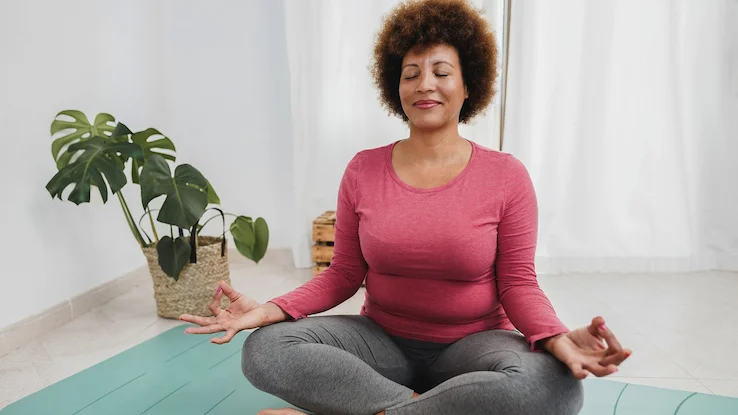
Yoga has long been a popular activity to help relieve stress and tension. People who are beginning yoga at home may focus on how complicated the moves appear to be. But yoga doesn’t have to be difficult at all!
Yoga practice centers around your breathing — and you can make your practice as simple or challenging as you want it to be. It’s all about finding the style of yoga that works for you.Still not sure where to start? If you’re not ready to join a studio for in-person classes, you’re in luck: It’s easy to start a yoga routine at home.
Learn about the health benefits of yoga, and follow our four simple tips to get started at your own pace
Yoga Can Have Big Physical and Mental Health Benefits
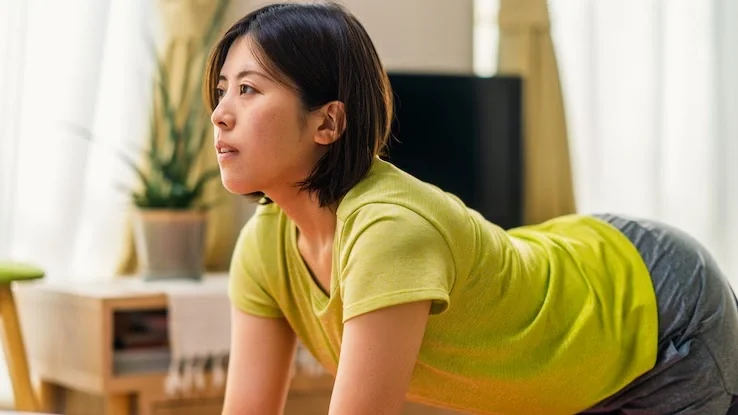
Before we look at ways to start your own yoga routine, let’s explore more about yoga and the benefits it offers. An ancient practice originally hailing from India, yoga focuses on various physical poses, breathing techniques and meditations.
Many people approach yoga as a spiritual practice, but others approach it simply as a healthy way to get physical activity and support their overall well-being. With the constant stresses of life, yoga is a reminder to breathe, relax and get centered again. Just like for other forms of regular physical activity, research has shown several potential health benefits from yoga. For example, yoga may help improve your:
- Flexibility
- Balance
- Energy
- Sleep
According to the National Institutes of Health, yoga may help with neck and low-back pain — and if you’re trying to quit smoking, yoga may help you quit.There are also mental and emotional health benefits that come with taking yoga.
For example, yoga can help with stress management and improve your mood. Because yoga can promote mindfulness, it may also support your decision-making and help you prioritize other health goals, like healthy eating. With these great benefits in mind, let’s get into some tips to start your yoga routine right at home.
Tip 1: Create a Comfortable Space to Practice Yoga at Home
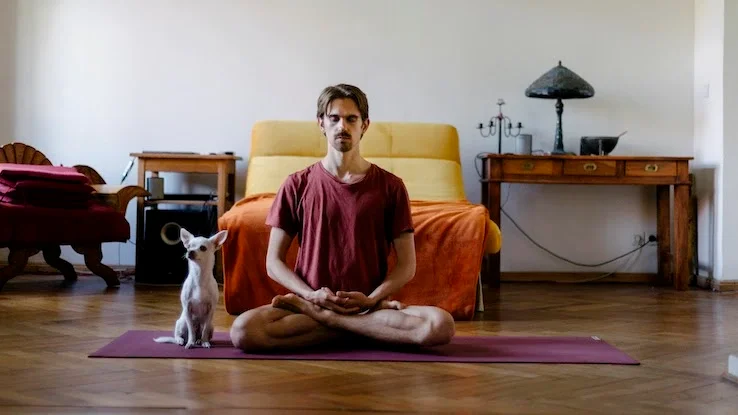
As you’re beginning yoga at home, you want to create a pleasant atmosphere for the practice. Look for a comfortable space in your living room, bedroom, outdoor space or another quiet area in your home.
Try adding plants and other calming decor to set a relaxing mood.
The only piece of equipment you need for yoga is a mat — consider investing in a nice, comfortable yoga mat to protect your bones during poses.
Some use thinner mats to help with stability for more active poses, while others may choose thicker mats that can help with achy joints. Some yoga classes may also use different props, like yoga blocks and cushions, but there’s no need to buy these when you’re just starting out at home. While you’re making your home comfy for your yoga session, make sure you also wear comfortable clothing.
Go for flexible pants and tops with breathable, moisture-wicking materials. This will help you to stretch and do the moves comfortably without having to adjust your clothes throughout your session
Tip 2: Focus on Your Breathing During Yoga
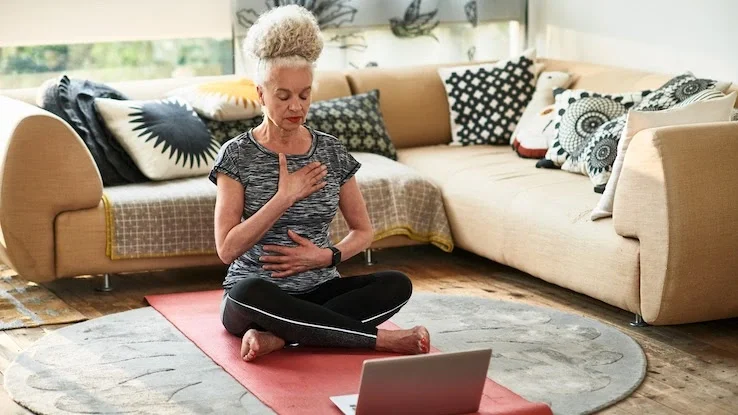
Another key tip in getting started with yoga is to focus on your breathing. Yoga is meant to help you relax and to ease tension, so it’s no surprise that yoga instructors push the importance of deep, steady breathing throughout a class. Often, beginners get so focused on performing the moves just right that they bypass this whole step.
Your breathing is a direct connection between your mind and your body. When you’re breathing rapidly or holding your breath, it often stems from stress or anxiety.In yoga, you’ll work on breathing deeper and lengthening your breaths during poses and moves.This type of breathing can help relieve stress and make you feel more grounded.
Tip 3: Start with Beginner Yoga Poses
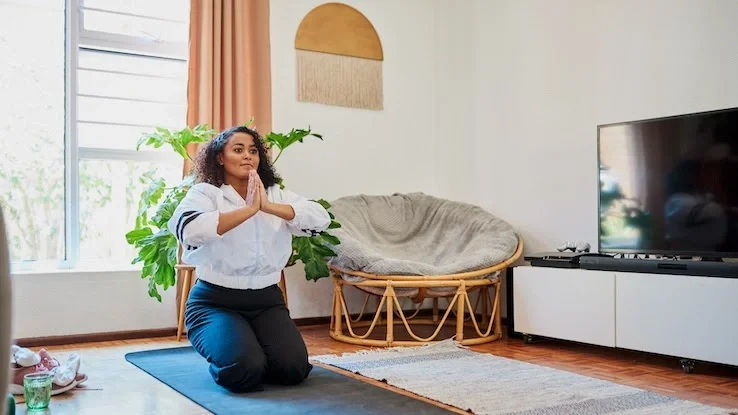
This next piece of advice may seem self-explanatory, but when beginning yoga at home, you want to take it easy. You can work up to more advanced yoga poses over time.
But as a beginner, you don’t want to do too much too quickly and end up burning yourself out or injuring yourself.
Start with easier yoga poses that focus on basic stretching and breathing throughout the session. One simpler yoga pose that’s great for beginners is child’s pose, where you kneel on the floor and bend your upper body to the ground in a gentle bow. Another good beginner pose is the cobra pose, where you lay on your stomach and slowly bring your upper body up into a slight backbend. And if a pose feels painful or uncomfortable, don’t push it.
You can always modify the poses based on your abilities and comfort level. In in-person and online classes, yoga instructors often provide modifications for beginners or people with injuries or physical limitations. You can also adjust poses and moves on your own in a way that feels better for your body.
Tip 4: Find a Simple Yoga Style That Works for You
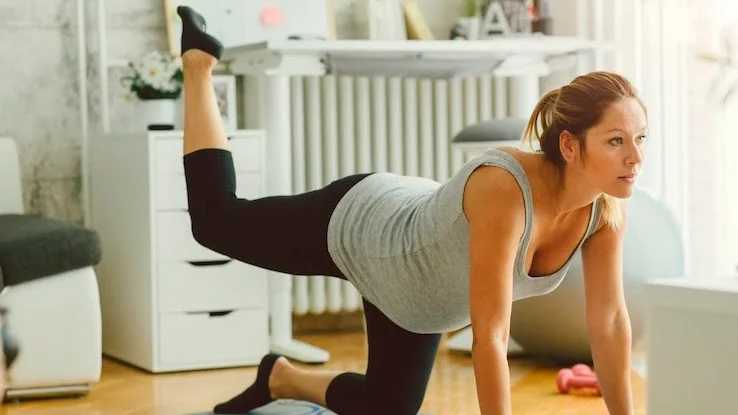
As an at-home beginner, another tip is to find simple online yoga classes that you can easily follow. A simple search on YouTube will show lots of beginner yoga classes to try from the comfort of your own home. Again, remember to take each pose at your own pace. There are also several different styles of yoga out there, so you want to research which would work best for you.
- Hatha yoga is typically a catchall term for many different styles of yoga that center around poses (called asanas) with breathing techniques. It’s good for beginners because the poses go at a slower pace.
- Vinyasa yoga uses more continuous movements between poses. You may need to learn some basic yoga movements before following along with a vinyasa class
- Yin yoga is another great slow-paced option. It focuses on relaxing into stretching postures.
- Restorative yoga focuses on body relaxation, so it can be nice after a long day. A session features fewer poses that tend to be gentler and easier on your body.
There are many other types of yoga, including prenatal yoga for pregnant people. You can try out different beginner yoga classes online to figure out which type works best for you. And if you have health conditions like arthritis, ask your doctor which types are best and safest for you to try as you begin yoga at home